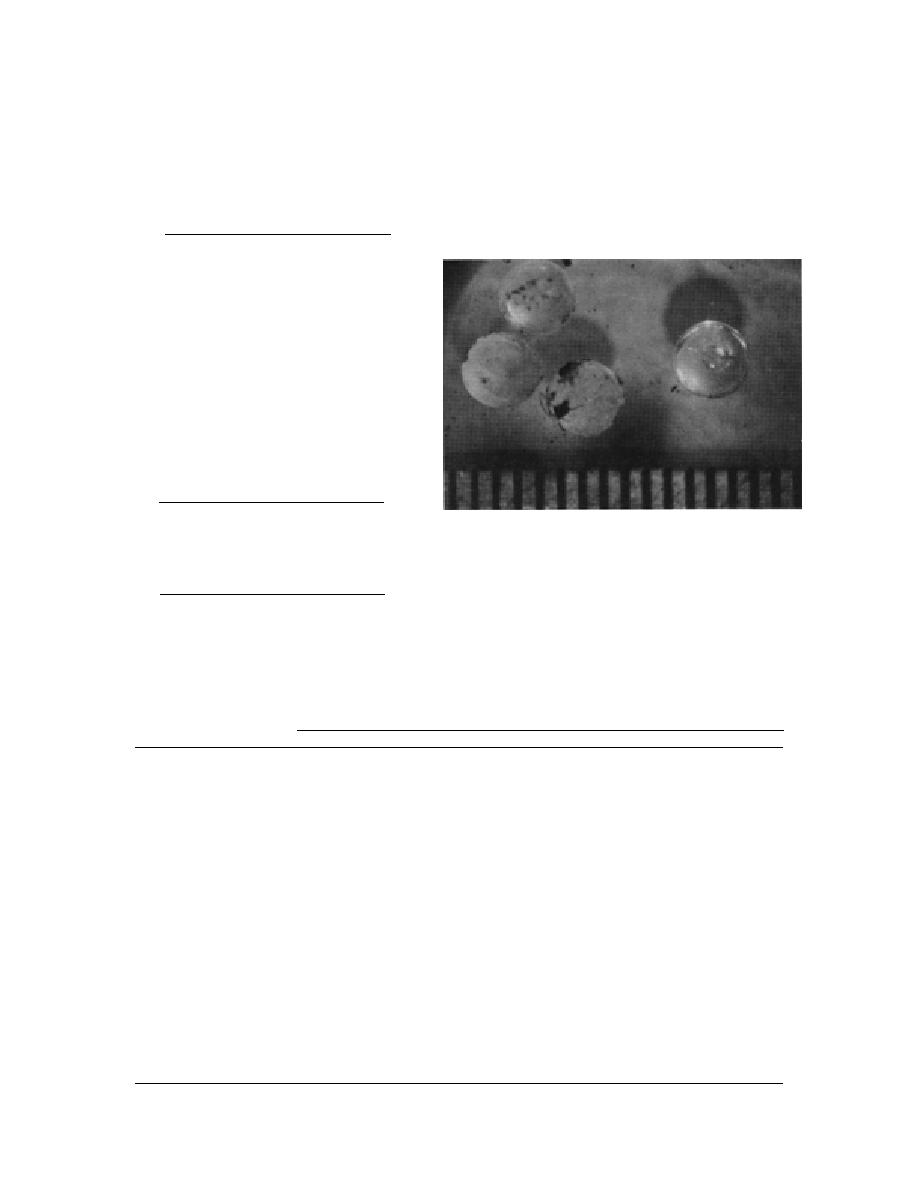
Table 5. Mass of white phosphorus
was change was a pitting or dimpling of the surface,
particles found following solvent
which gave the surface a whitish color (Fig. 8). This
extraction of sediment at various
dimpling may correspond to empty sediment pores
moisture contents s and gas chro-
through which P4 vapor diffused. With time, particles
matographic analysis.
decreased in size and became irregular in shape. Sever-
al particles that had maximum linear diameters of ap-
WP mass
Recovery
proximately 1 mm appeared to have horn-like protru-
s
Rep.
(mg)
(%)
sions. Gross changes in surface texture and particle
0.45
1
7.05
86.4
0.45
2
7.96
97.5
0.45
3
7.92
97.0
0.64
1
8.46
103.6
0.64
2
8.13
99.6
0.64
3
7.92
96.9
0.82
1
6.21
76.0
0.82
2
8.53
104.5
0.82
3
8.86
108.5
1
1
8.19
100.3
1
2
8.60
105.3
1
3
8.16
99.9
>1
1
8.27
101.3
>1
2
7.90
96.8
>1
3
7.66
93.8
no sediment
1
8.48
no sediment
2
7.85
mean =
8.01
97.8
Figure 8. Surface texture of P4 particles. The P4 particle on
std dev. =
0.57
%RSD=
7.16
the left is freshly made from molten P4. Three particles on the
right have been incubated in unsaturated sediment at 15C for
high =
8.86
108.5
low =
6.21
76.0
three days. Voids are visible on the surface of each particle, giv-
range =
2.65
32.5
ing a dimpled appearance. Graduations on the ruler are 0.5 mm.
Table 6. Physical appearance of WP particles incubated at five moisture contents and three tempera-
tures.
No. of
No. of
Temp
samples
particles
Surface appearance
(C)
examined
found Spherical
Smooth
Pitted
Lustrous White Orange
Colorless
Translucent Smoking
s = 0.45
4
14
14
10
7
13
10
6
0
11
14
0
15
13
11
9
1
9
3
8
0
2
11
0
20
6
0
s = 0.64
4
14
14
13
10
5
13
3
0
12
14
0
15
13
10
10
2
8
4
5
0
5
10
0
20
6
0
s = 0.82
4
12
12
12
12
1
12
1
0
12
12
0
15
15
6
4
3
2
6
0
1
3
6
0
20
10
6
5
5
1
5
0
0
4
6
4
s=1
4
10
10
10
10
0
10
0
0
10
10
0
15
12
12
12
12
0
10
1
7
7
11
0
20
10
10
9
9
2
8
0
0
8
8
5
s >1
4
11
11
11
11
0
11
0
0
11
11
0
15
12
12
12
12
0
12
0
3
12
12
1
20
10
10
10
10
0
10
0
0
10
10
0
10



 Previous Page
Previous Page
